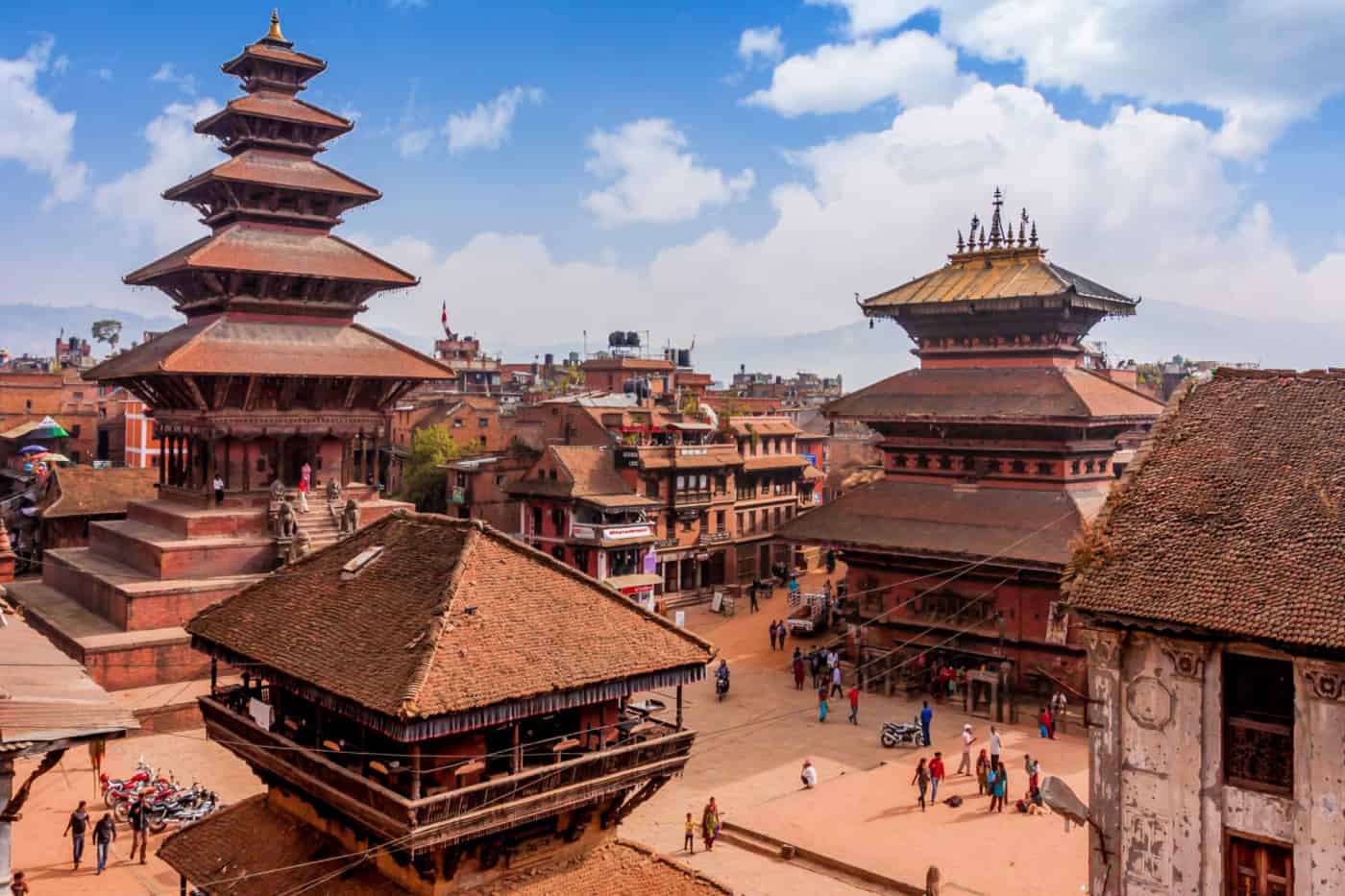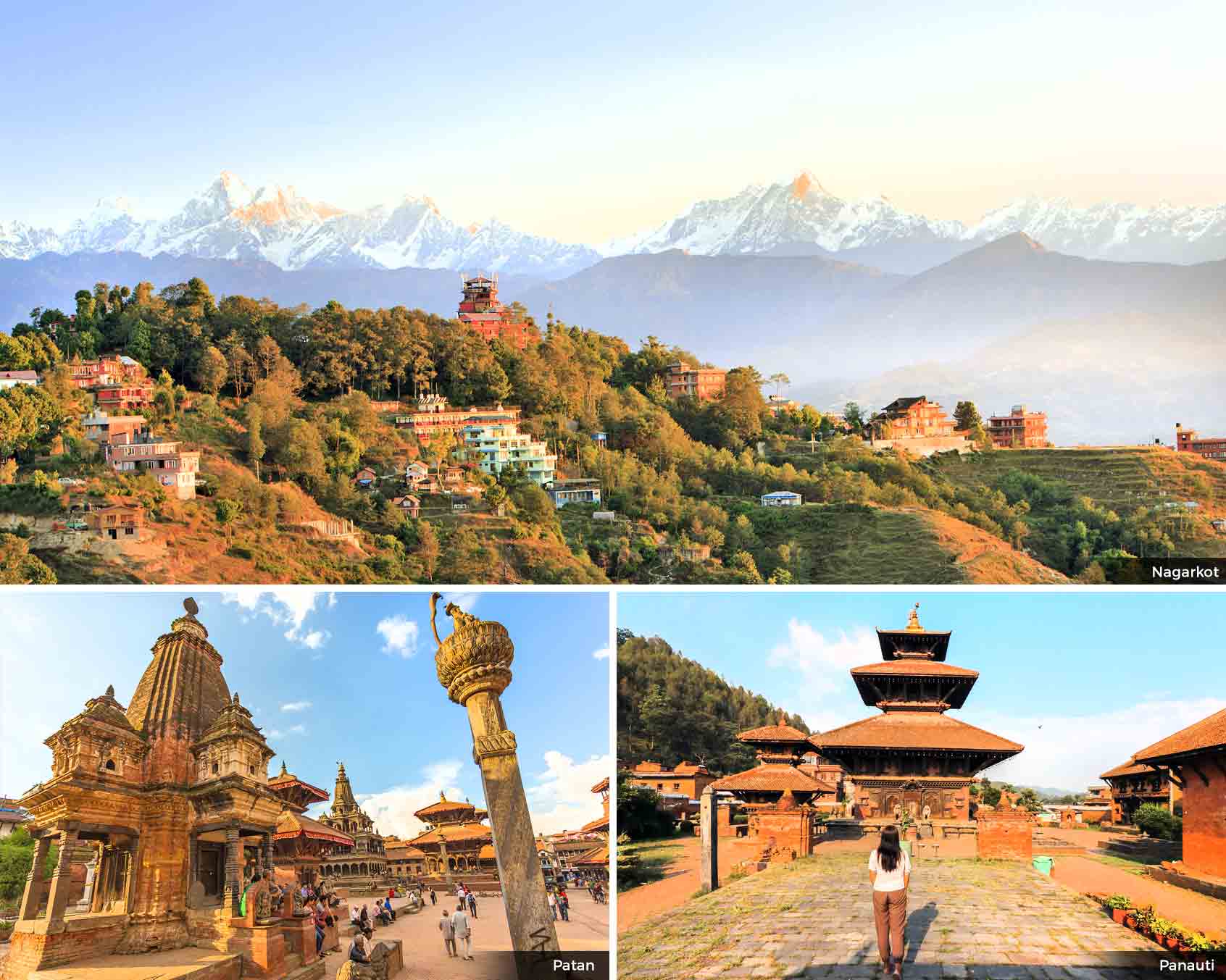
Nepal, a landlocked nation nestled in the heart of the Himalayas, is a tapestry woven with breathtaking landscapes, ancient cultures, and a spiritual aura that captivates every traveler. From the towering peaks of Everest to the lush jungles teeming with wildlife, Nepal offers a diverse range of experiences that cater to adventurers, spiritual seekers, and cultural enthusiasts alike. This comprehensive guide will delve into the wonders of Nepal, providing essential information to help you plan your unforgettable journey to this Himalayan paradise.
A Glimpse into Nepal’s History & Culture:
Nepal’s history is as rich and complex as its geography. For centuries, the Kathmandu Valley flourished as a hub of trade and cultural exchange, home to powerful kingdoms and vibrant artistic traditions. The Malla dynasty, known for its patronage of the arts, left behind a legacy of exquisite architecture, intricate wood carvings, and vibrant festivals that continue to shape the cultural landscape.

Related Articles about Unveiling the Roof of the World: A Comprehensive Guide to Nepal:
- Paris: A Timeless Guide to the City of Lights
- Thailand: A Symphony of Smiles, Spices, and Serenity
- Discovering Malaysia: A Kaleidoscope of Culture, Nature, and Culinary Delights
- Cairo: A Timeless Tapestry of Ancient Wonders and Modern Marvels
- The American Tapestry: A Comprehensive Travel Guide to the United States
The unification of Nepal under the Gorkha king Prithvi Narayan Shah in the 18th century marked a pivotal moment, shaping the nation’s borders and identity. Nepal remained independent throughout the colonial era, a testament to its resilient people and strategic location. The 20th and 21st centuries have witnessed significant political transformations, including the abolishment of the monarchy and the establishment of a federal democratic republic.
Nepal’s culture is a vibrant blend of Hinduism and Buddhism, coexisting harmoniously and influencing every aspect of life. Temples, stupas, and monasteries dot the landscape, showcasing intricate craftsmanship and spiritual significance. The diverse ethnic groups, each with their own unique traditions, languages, and customs, contribute to the country’s rich cultural mosaic. From the vibrant colors of the Dashain festival to the peaceful serenity of Buddhist monasteries, Nepal offers a profound immersion into a world of ancient wisdom and enduring traditions.
Top Attractions: Exploring the Wonders of Nepal:
Nepal boasts an impressive array of attractions, catering to a wide range of interests. Here are some of the must-visit destinations:
Kathmandu Valley:
- Kathmandu Durbar Square: A UNESCO World Heritage Site, this square is a mesmerizing collection of ancient temples, palaces, and courtyards, showcasing the artistic brilliance of the Malla and Shah dynasties. Explore the Kumari Ghar, home to the Living Goddess Kumari, and marvel at the intricately carved facades of the temples.
- Pashupatinath Temple: One of the holiest Hindu temples dedicated to Lord Shiva, Pashupatinath is a vibrant and spiritually charged site on the banks of the Bagmati River. Witness the cremation rituals and experience the powerful energy of this sacred place.
- Boudhanath Stupa: A massive, iconic stupa, Boudhanath is a significant Buddhist pilgrimage site. Circumambulate the stupa, spin the prayer wheels, and soak in the peaceful atmosphere. The surrounding area is filled with monasteries, shops, and restaurants, making it a vibrant cultural hub.
- Swayambhunath Stupa (Monkey Temple): Perched atop a hill overlooking Kathmandu Valley, Swayambhunath offers stunning panoramic views. Explore the ancient stupa, adorned with the iconic Buddha eyes, and interact with the playful monkeys that inhabit the area.
- Bhaktapur Durbar Square: Another UNESCO World Heritage Site, Bhaktapur is a beautifully preserved medieval city showcasing Newari architecture and culture. Wander through the narrow streets, admire the intricate wood carvings, and savor the local pottery.
- Patan Durbar Square: Similar to Kathmandu and Bhaktapur, Patan Durbar Square is a treasure trove of ancient temples, palaces, and courtyards. Explore the Patan Museum, housed in a former palace, and delve into the artistic heritage of the Kathmandu Valley.

Pokhara Valley:
- Phewa Lake: The second-largest lake in Nepal, Phewa Lake offers stunning views of the Annapurna and Dhaulagiri mountain ranges. Take a boat ride, visit the Tal Barahi Temple on a small island, and enjoy the tranquil atmosphere.
- Sarangkot: A popular viewpoint offering breathtaking sunrise views over the Annapurna and Dhaulagiri ranges. Paragliding is also a popular activity from Sarangkot.
- World Peace Pagoda: A white Buddhist stupa perched on a hilltop overlooking Phewa Lake, offering panoramic views and a peaceful atmosphere.
- Devi’s Fall & Gupteshwor Cave: Explore the cascading waterfall of Devi’s Fall and venture into the mysterious Gupteshwor Cave, a sacred Hindu shrine.
- Begnas Lake: A serene and less crowded lake, perfect for a relaxing escape from the bustling city.
Trekking & Mountaineering:
Nepal is a trekker’s paradise, offering a diverse range of trekking routes, from easy day hikes to challenging expeditions. Some of the most popular trekking destinations include:
- Everest Base Camp Trek: A classic trek to the base of the world’s highest peak, offering unparalleled views of the Himalayas and an unforgettable adventure.
- Annapurna Circuit Trek: A challenging but rewarding trek around the Annapurna Massif, showcasing diverse landscapes, cultural encounters, and stunning mountain views.
- Annapurna Base Camp Trek: A shorter and less demanding trek to the base of Annapurna, offering breathtaking views and a rewarding experience.
- Langtang Valley Trek: A beautiful trek through the Langtang National Park, showcasing diverse flora and fauna, and offering a glimpse into the Tamang culture.
- Gokyo Lakes Trek: A scenic trek to the turquoise Gokyo Lakes, offering stunning views of Everest and other Himalayan peaks.
Chitwan National Park:
- Jungle Safari: Explore the diverse wildlife of Chitwan National Park, including tigers, rhinos, elephants, and various bird species.
- Canoe Ride: Float down the Rapti River and spot crocodiles, birds, and other wildlife.
- Elephant Back Safari: Experience the jungle from the back of an elephant, offering a unique perspective on the wildlife.
- Tharu Culture Village Tour: Immerse yourself in the local Tharu culture, visit the Tharu Cultural Museum, and enjoy a traditional Tharu dance performance.
Other Notable Destinations:
- Lumbini: The birthplace of Siddhartha Gautama, the Buddha, Lumbini is a significant Buddhist pilgrimage site.
- Bandipur: A beautifully preserved Newari town, offering stunning views of the Himalayas and a glimpse into traditional Nepali life.
- Mustang: A remote and culturally rich region, offering a unique trekking experience and stunning landscapes.
Essential Travel Tips for Nepal:
- Visa: Tourist visas are readily available upon arrival at Tribhuvan International Airport (KTM) in Kathmandu and at land border crossings. You can also obtain a visa online prior to your trip.
- Currency: The Nepalese Rupee (NPR) is the official currency. ATMs are widely available in major cities and tourist areas, but it’s advisable to carry some cash, especially when trekking or visiting remote areas.
- Language: Nepali is the official language. English is widely spoken in tourist areas.
- Health: Consult your doctor about necessary vaccinations and malaria prevention. Drink bottled or purified water. Pack a basic first-aid kit.
- Altitude Sickness: If trekking at high altitudes, acclimatize gradually to avoid altitude sickness. Drink plenty of fluids, and avoid alcohol and strenuous activity.
- Trekking Permits: Trekking permits are required for most trekking routes. You can obtain permits through trekking agencies or at the Trekking Agencies’ Association of Nepal (TAAN) office in Kathmandu.
- Bargaining: Bargaining is common in markets and with taxi drivers.
- Respect Local Customs: Dress modestly when visiting religious sites. Remove your shoes before entering temples and homes. Ask for permission before taking photos of people.
- Electricity: The voltage is 220V, and the plug type is primarily Type C and D. Power outages are common, so consider bringing a power bank or adapter.
- Internet & Communication: Wi-Fi is available in most hotels, restaurants, and cafes. SIM cards with data plans are readily available.
- Safety: Nepal is generally a safe country for tourists. However, be aware of your surroundings, especially in crowded areas. Avoid walking alone at night in poorly lit areas.
Accommodation Options in Nepal:
Nepal offers a wide range of accommodation options to suit all budgets and preferences:
- Luxury Hotels: Kathmandu and Pokhara offer a selection of luxurious hotels with world-class amenities.
- Mid-Range Hotels: Comfortable hotels with good facilities are available in major cities and tourist areas.
- Guesthouses: Guesthouses offer budget-friendly accommodation, often with a more local experience.
- Homestays: Experience authentic Nepali hospitality by staying in a local homestay.
- Tea Houses (for trekkers): During trekking, tea houses provide basic accommodation and meals along the trekking routes.
Transportation in Nepal:
Getting around Nepal can be an adventure in itself, but it’s also a crucial aspect of your travel experience.
- Flights: Domestic flights are the most convenient way to travel between major cities like Kathmandu, Pokhara, and Lukla (for Everest Base Camp trekking).
- Buses: Tourist buses offer a comfortable and affordable way to travel between cities.
- Local Buses: Local buses are a more budget-friendly option, but they can be crowded and less comfortable.
- Taxis: Taxis are readily available in major cities. Negotiate the fare beforehand.
- Motorbikes & Scooters: Renting a motorbike or scooter can be a fun way to explore the Kathmandu Valley and Pokhara, but be cautious of traffic and road conditions.
- Jeeps & 4x4s: For trekking in remote areas or traveling on rough roads, jeeps and 4x4s are the preferred mode of transportation.
- Trekking (on foot): The primary mode of transportation in the mountains, allowing you to immerse yourself in the natural beauty and experience the local culture.
Best Time to Visit Nepal:
The best time to visit Nepal is during the shoulder seasons of spring (March-May) and autumn (September-November). These months offer pleasant temperatures, clear skies, and excellent visibility for trekking and sightseeing.
- Spring (March-May): The weather is warm and sunny, with blooming rhododendrons adding vibrant colors to the landscape.
- Autumn (September-November): The weather is generally clear and dry, with excellent visibility for mountain views.
- Summer (June-August): The monsoon season brings heavy rainfall, making trekking difficult and causing potential landslides.
- Winter (December-February): The weather is cold, especially at higher altitudes, but the skies can still be clear, offering good views. Some treks are still accessible during this season.
Conclusion:
Nepal is a destination that will undoubtedly leave an indelible mark on your soul. With its majestic mountains, rich cultural heritage, and warm hospitality, it offers an unforgettable travel experience. By planning your trip with this comprehensive guide, you can embark on an adventure that will awaken your senses, broaden your horizons, and create memories that will last a lifetime. So, pack your bags, prepare for an adventure, and get ready to be mesmerized by the magic of Nepal – the Roof of the World.





